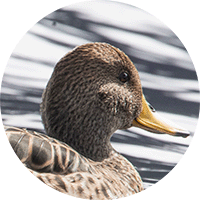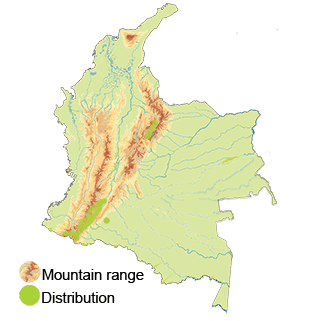Yellow-billed Pintail
Appearance: The Yellow-billed Pintail is a medium-sized duck (61 cm - 24 in), with males and females exhibiting sexual dimorphism. The male has a distinctive yellow bill with black ridge, a dark brown head with a white stripe behind the eye, a brownish body with fine barring, and a gray tail. In contrast, the female has a mottled brown plumage with a whitish belly and a comparatively duller bill.
Habitat: This species typically inhabits freshwater wetlands, ponds, lakes, marshes, and slow-moving rivers. They can also be found in agricultural fields and flooded grasslands. They are particularly prevalent along the country's coasts, including both Pacific and Caribbean coastlines. At 100 to 3800 m altitude.
Breeding: During the breeding season, which occurs from September to December, the Yellow-billed Pintail forms pairs. They nest on the ground, constructing shallow depressions lined with vegetation near water bodies. The female lays a clutch of 6-10 eggs, which she incubates for about 25-26 days. After hatching, the ducklings are precocial, meaning they are relatively independent and able to feed themselves shortly after birth.
Conservation Status: The Yellow-billed Pintail is considered to be of Least Concern according to the International Union for Conservation of Nature (IUCN).
Distribution
Central and Eastern Andes: The Yellow-billed Pintail is also found in the high-altitude regions of the Colombian Andes. Lakes, marshes, and wetlands in the central and eastern parts of the country, such as those found in the páramo ecosystems, provide suitable habitats for this species.
Altitudinal Range: The Yellow-billed Pintail in Colombia is known to occur at various altitudes, ranging from sea level to around 4,000 meters (13,000 feet) above sea level. This adaptability to different altitudinal zones allows the bird to utilize a variety of habitats throughout the country.
Taxonomy
- Kingdom: Animalia
- Phylum: Chordata
- Class: Aves
- Order: Anseriformes
- Family: Anatidae
- Genus: Anas (True Ducks)
- Species: Anas georgica
Vocalization
Quacking: The most typical vocalization of the Yellow-billed Pintail is a series of short, rapid quacks. The quacks are often repeated several times in quick succession. This vocalization is commonly used for communication between individuals and may serve as a contact call or a general form of communication within the flock.
Whistling: Occasionally, the Yellow-billed Pintail produces a high-pitched whistle. This whistle is typically short and sharp in tone and may be used during courtship displays or as a warning call to other individuals.
Grunting: Another vocalization made by the Yellow-billed Pintail is a low, soft grunt. This sound is often used in close proximity to other individuals and may serve as a behavioral signal within the flock.
Hissing: When the Yellow-billed Pintail feels threatened or agitated, it may emit a hissing sound. This hiss is a defensive vocalization used to deter potential predators or warn other individuals of a potential threat.







